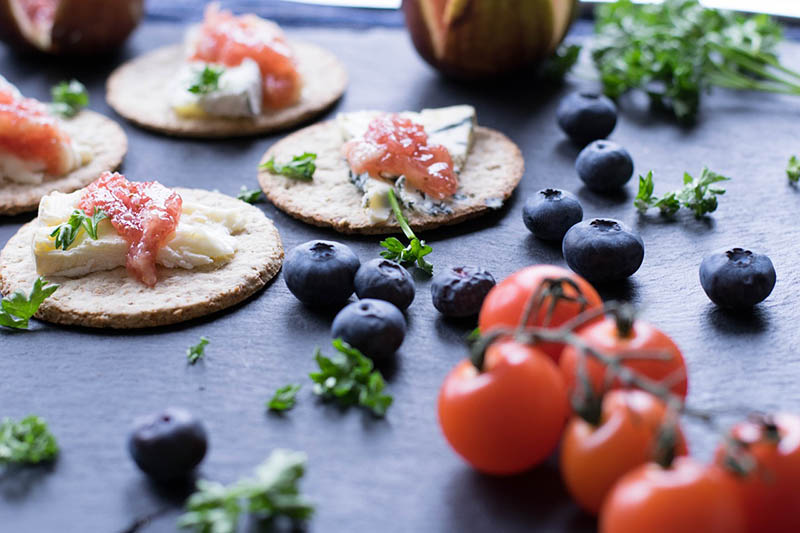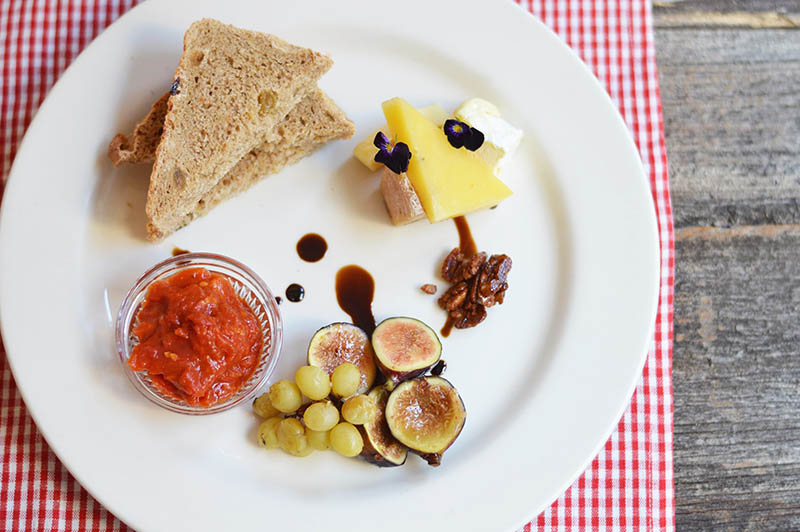
Fundamentals of Cheese: Understanding Cheese Pairings
There is so much more to world of cheese pairing than just wine
Whether you’re making a composed cheese course, a cheese plate or a large grazing table, there are certain principles that can help you find the ultimate pairings for cheese.
At its core, cheese is salty and fatty, two aspects that make it especially friendly when it comes to finding partners in both beverages and other accompaniments, as salt and fat both amplify flavor. Cheese, however, is an extremely diverse category in terms of style and age, and different cheeses can exhibit flavors that range from sweet and fruity, to savory, earthy and even downright funky.
While many beverages and accoutrements can work with a variety of cheeses, not every pairing is a favorable one, especially when you’re working with particularly delicate or particularly strong cheeses.
As such, here are several principles to guide you to finding the most harmonious cheese pairings.
The Goal of Pairing Cheese
Just like concocting a composed dish, the goal of pairing cheese is to find those marriages where both partners make the other a little more vibrant.
In a perfect pairing, the flavors of both elements sing a little louder in the presence of the other, textures become enhanced, and together both elements become more than just the sum of their parts. At Murray’s, where I often teach cheese and wine pairing classes, we often refer to the concept that “one plus one equals three,” meaning that new flavor or textural sensations become apparent when you find the ultimate pairing between two things.
You might even find that something that you don’t think you like — certain strong cheeses, or particular styles of wine — become more than just palatable, but even craveable when paired with the right partner.
Where to Start: Consider Intensity
When matching cheese with either a beverage, or an accoutrement pairing such as jam, pickles, nuts, fruit, etc., first consider the flavor intensity of the cheese you are working with. We sometimes also refer to this as “volume,” as in how loudly the cheese projects its flavor.
A triple crème bloomy rind cheese, for example, might be rich with texture, but can speak softly when it comes to its flavor, which might be more subtle or nuanced. A big, bold red wine might be too comparatively loud for such a delicate cheese.
On the other hand, an aromatic, complex washed rind cheese with flavors that can range from bacon to barnyard needs something equally powerful so that it doesn’t flatten something that’s stacked up against it.
Ask yourself: do these two elements have equal intensity of flavor?

Cheese Pairing Principle #1: Like with Like
Often the easiest place to start when looking for interesting and harmonious cheese pairings is simply to try to find accompaniments, either beverages or nibbles, that mirror the flavors in the cheese.
A tangy, fresh chèvre might taste of lemon curd, an aged gouda might evoke butterscotch notes or an Alpine cheese might bring forward flavors of onions.
If you notice a particular flavor in the cheese, try putting your cheese with the very thing you are reminded of, and see how both elements become amplified because of their like characteristics.
Cheese Pairing Principle #2: Opposites Attract
On the flip side of like with like, however, is the notion of opposites attract. Sometimes contrast, more than similarity, is the thing that makes both cheese and its partner a little more bold in the presence of the other.
A sharp and savory aged cheddar can do well with a fruity wine or a fruit compote, a piquant blue often relaxes its sting with something a little sweet to offset it (even chocolate) or a funky, aromatic cheese can be well-matched by something whose aroma is equally strong, but leans toward floral more than funk.
You can also apply this principle to the matter of texture: a rich, tongue-coating triple crème against a zesty, fizzy Champagne or a salty, crumbly Italian cheese with something tannic or rich. Tannins in wine, however, can be tricky against younger, more delicate cheeses so proceed cautiously with those big reds. Aged, firm cheeses will be your safest bets against those powerhouses.

Cheese Pairing Principle #3: Geographical Provenance
I cannot take credit for the following adage, and you will doubtlessly hear it throughout your culinary life from not only cheese pros, but wine experts and even chefs: “what grows together, goes together.”
The mysterious element of terroir, or of similar geographical provenance, creates pairings that often seem like they were born to be together. When the same soil that grew the grass that fed the animals whose milk became the cheese is the soil that grew the grapevines or olive trees, there seems to be something in the very DNA of those things that draws them together.
Spanish cheeses love jamón Ibérico and Manzanilla olives. A funky Époisses from Burgundy can be well met by an earthy, fruity Pinot Noir from the same region.
More Like This: How To Pair Wine With Vegetables
Classic Cheese Pairings
While discovering exciting or new pairings for cheese is some of the fun, there are certainly tried-and-true matchups that are based on one or more of these principles, and that can serve as failsafe options when you need to put something together quickly.
Give these classic cheese pairings a try:
- Aged cheddar with ale or mustard
- Fresh chévre with Sauvignon Blanc or Granny Smith apples
- Blue cheese with Port or Buffalo wings
- Manchego with Tempranillo or jamón
- Gruyère with Pinot Noir or caramelized onions



Add new comment